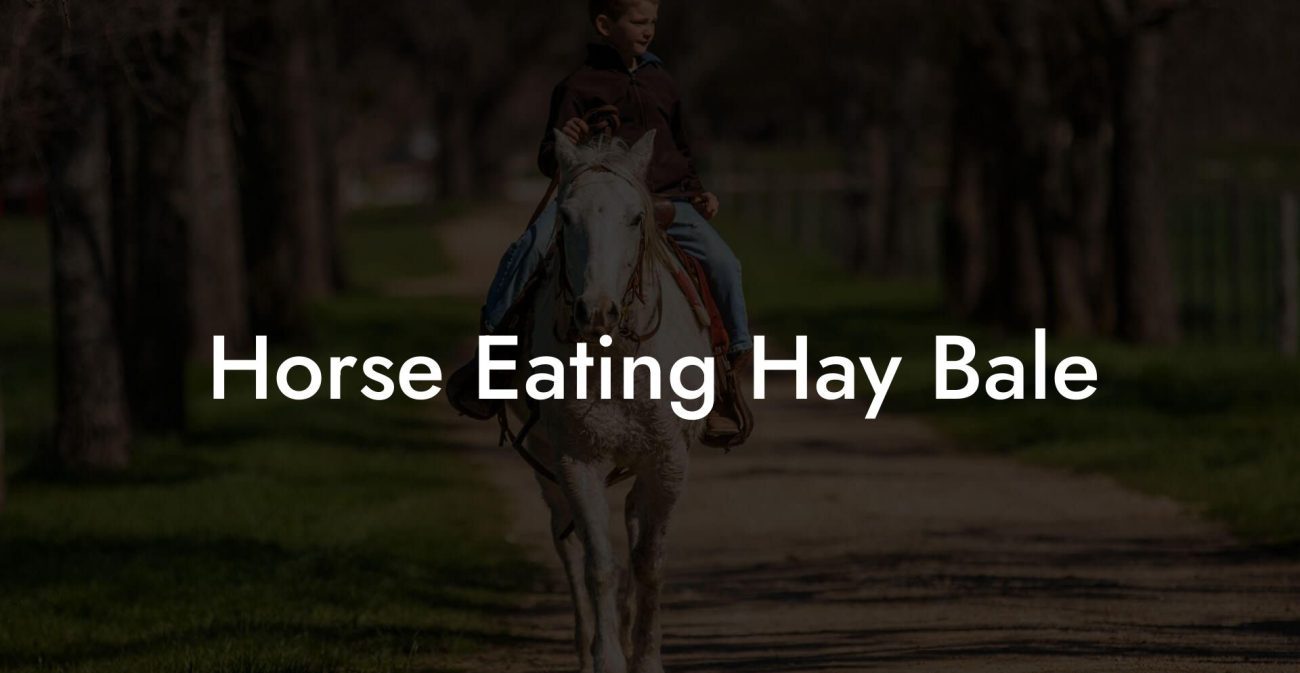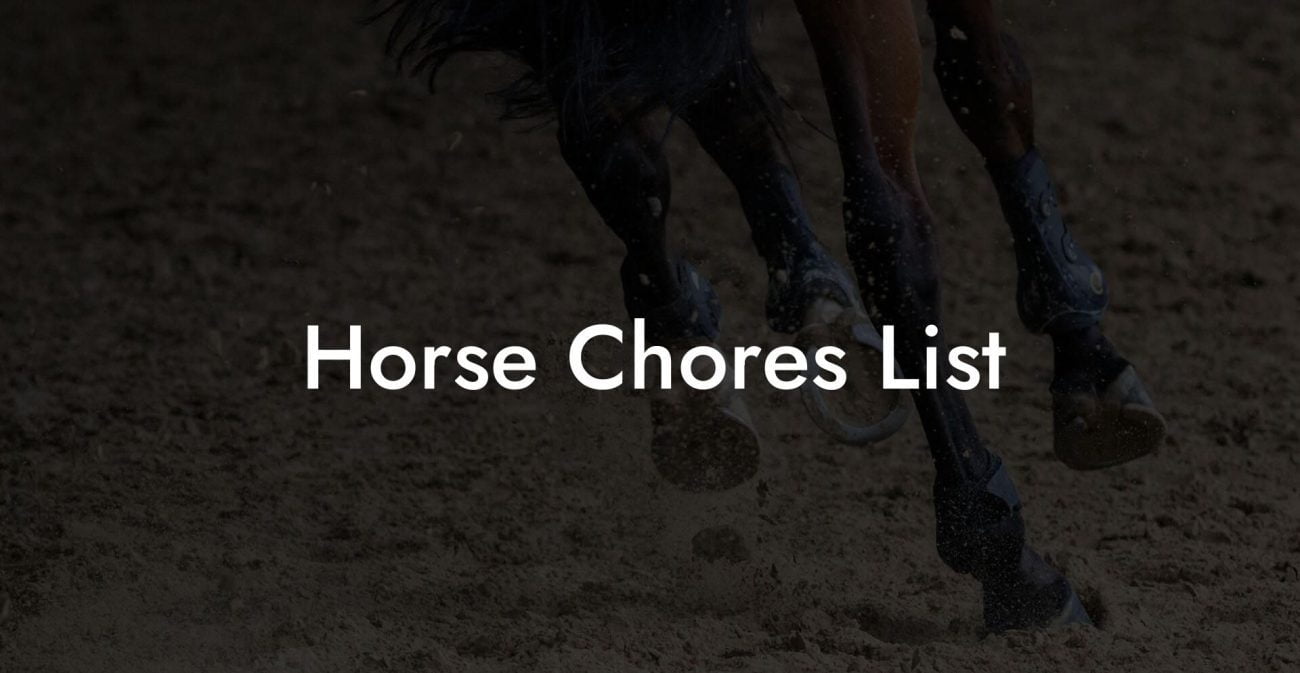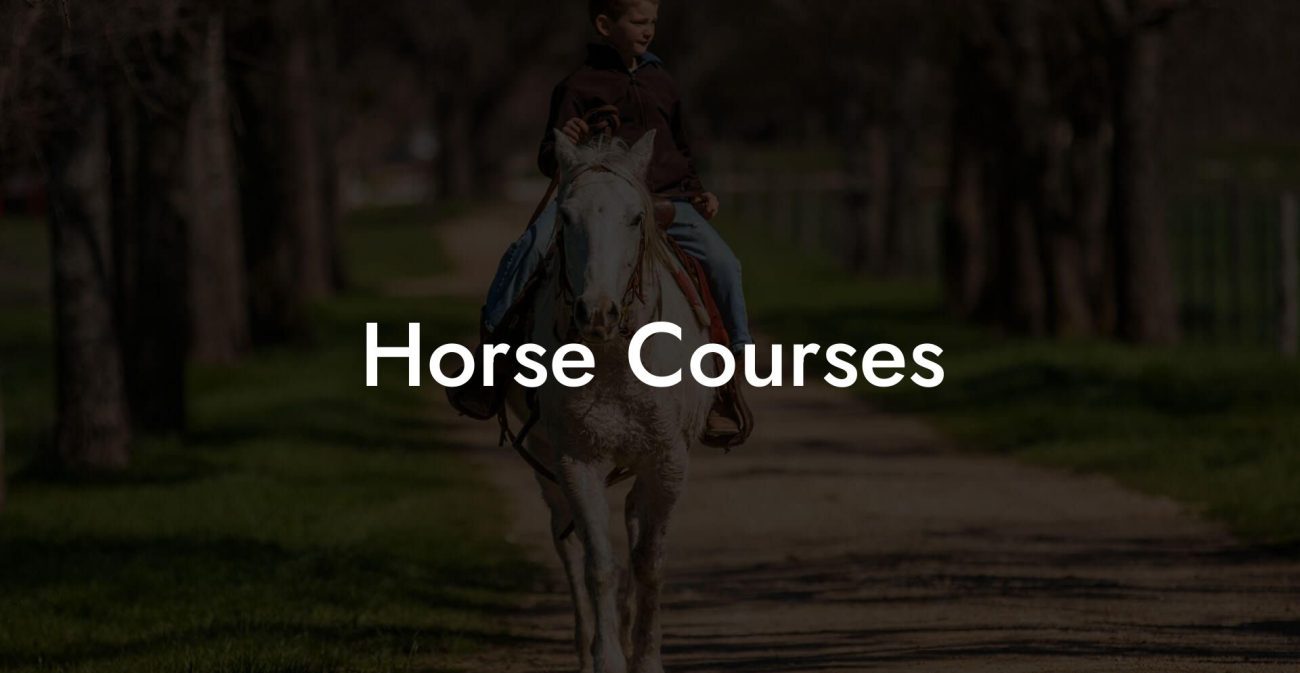When you first meet a new riding horse, a fresh-faced colt or a wide-eyed filly with a heart as big as the prairie, you might wonder if breaking them is as daunting as breaking into a secret club with a mysterious handshake. Spoiler alert: it’s not about brute force or stubborn dominance but about understanding, patience, and a dash of humor. In today’s equestrian world, the process of breaking, or more accurately, training, a new riding horse has evolved into a sophisticated art form that embraces natural horsemanship, trust-building, and modern techniques designed to empower both rider and horse. So, buckle up (or rather, saddle up) for a wild ride as we break down the ins and outs of breaking a new riding horse!
Quick Links to Useful Sections
- Understanding the Challenge: What Does It Mean to "Break" a New Riding Horse?
- The Evolution of Horsemanship: From “Breaking” to Trust-Building
- Core Principles Behind Modern Horse Training Techniques
- The Reality Check: How Hard Is It to Break a New Riding Horse?
- Conventional Methods Revisited: The Old School vs. The New Wave
- Modern, Gentle, and Holistic Approaches: The Future of Equine Training
- Natural Horsemanship: The Art of Communication
- Mindfulness and Equine Connection
- Technology and Modern Training Aids
- Essential Equipment and Safety: Tools of the Trade
- The Saddle and Bridle: Foundations of Communication
- Protective Gear and Groundwork Tools
- Building Trust: The Cornerstone of Successful Training
- The Psychology of a New Riding Horse: Reading Equine Emotions
- Real-World Experiences: Case Studies in Breaking a New Riding Horse
- Case Study 1: The Spirited Colt’s Journey to Confidence
- Case Study 2: From Timid to Trusting – A Filly’s Transformation
- Case Study 3: Merging Technology and Tradition for a Seamless Transition
- Creating Your Personalized Training Plan for Your New Riding Horse
- Step 1: Start With a Comprehensive Assessment
- Step 2: Set Clear, Achievable Goals
- Step 3: Integrate Multiple Training Modalities
- Step 4: Establish a Consistent Routine
- Step 5: Monitor, Evaluate, and Adjust
- Resources and Community Support: Your Next Steps
- Integrative and Holistic Approaches FAQs: Your Questions Answered
- Your Journey to Masterful, Compassionate Horsemanship
Understanding the Challenge: What Does It Mean to "Break" a New Riding Horse?
The term “breaking” a new riding horse might conjure images of wild west showdowns and rough behavior modification techniques, but modern horsemanship is far more refined. Today’s methods focus on training a horse to willingly accept a saddle, bridle, and rider, all while forging a strong bond based on mutual respect and trust. When we talk about “breaking” a new riding horse, we’re really discussing the process of acclimating a young equine athlete to the world of riding, ensuring that they are confident, obedient, and above all, happy in their new role.
This transformation isn’t about subjugation, it's about collaboration. And while the challenge might seem as complex as decoding Gen-Z memes or mastering the perfect TikTok trend, the secret sauce lies in understanding the horse’s mindset, natural instincts, and communication cues.
In this comprehensive guide, we’ll explore the evolving definition of "breaking" a new riding horse, the techniques that have reshaped the practice, and real-world examples that illustrate how modern methods can turn a nervous young equine into a confident riding partner.
The Evolution of Horsemanship: From “Breaking” to Trust-Building
The history of horse training reads like a wild adventure narrative, where ancient warriors and cowboys honed their skills in the saddle using methods that would be considered downright harsh today. In contrast, modern horsemanship has shifted from the old paradigm of domination to one of partnership, communication, and understanding. Historically, the “break” was an intense process characterized by forceful techniques and punitive measures, but the painful past is giving way to humane, science-backed methods that prioritize the horse’s well-being.
Today's approach is all about establishing trust and encouraging cooperation rather than coercion. It’s akin to how influencers build a community by reciprocating with genuine engagement rather than just broadcasting content. Whether you’re managing a feisty colt or a sensitive filly, the new school of thought in breaking a riding horse emphasizes learning each animal’s unique language.
A modern riding horse training program involves several key components: gradual exposure to new equipment, consistent and repetitive positive experiences, and, most importantly, a calm, assertive rider who knows how to read their horse’s body language. This holistic mindset not only leads to a more content equine but also sets the stage for a long-term partnership where both horse and rider thrive.
Core Principles Behind Modern Horse Training Techniques
Before diving into the nitty-gritty details, let’s explore the core principles that underpin modern horse training methods:
- Trust Over Tyranny: Prioritizing communication and trust over forceful tactics ensures that the horse views training as a positive, enriching experience.
- Gradual Desensitization: Like easing into a new relationship, gradual exposure to different conditions and stimuli helps the horse learn without feeling overwhelmed.
- Consistency Is Key: Regular, predictable routines create a structured environment where the horse can flourish.
- Positive Reinforcement: Rewarding good behavior reinforces the desired actions and builds a happy, confident horse.
- Anatomy and psychology: Understanding both the physical structure and mental state of the horse allows the trainer to tailor methods for optimal success.
By integrating these principles, modern trainers ensure that the journey from a raw, untrained horse to a well-behaved riding companion is as stress-free as possible for both parties involved. Think of it as creating the ultimate ESG (Equine, Social, and Genuine) approach to horse training!
The Reality Check: How Hard Is It to Break a New Riding Horse?
If you’re expecting a Hollywood montage of dramatic struggles, you might be in for a surprise. Breaking a new riding horse isn’t about defeating an insurmountable beast, it’s a process of collaboration, understanding, and most importantly, timing. The difficulty level can vary widely depending on several factors:
- The Horse’s Age: A young colt may be curious and energetic, making it both easier and trickier to direct their energy constructively.
- Previous Experiences: A horse without prior negative interactions with humans or equipment often adapts faster compared to one with a traumatic past.
- Temperament: Each horse has a unique personality. Some may be naturally calm and willing, while others are more spirited and independent.
- Training Approach: Methodologies that are patient, positive, and science-backed are typically more successful and less stressful for the horse.
- Rider’s Skill Level: A confident, knowledgeable rider who understands psychological cues and body language is crucial to a smooth transition.
For a Gen-Z or millennial equestrian, the modern approach to horse training might resonate with the ethos of self-care and mindfulness. It’s about crafting a training routine that respects the horse’s natural behavior while gradually introducing them to the rigors of riding. Despite the challenges, many riders find the process incredibly rewarding, imagine the satisfaction of turning initial chaos into a well-choreographed dance between human and horse!
Ultimately, while the task may seem formidable at first glance, the modern methods in horse training transform what was once a grueling ordeal into a fulfilling, even joyful, journey of growth and mutual achievement.
Conventional Methods Revisited: The Old School vs. The New Wave
To really appreciate how the art of breaking a new riding horse has evolved, it’s worth looking at traditional methods. The old school often relied on harnessing dominance through physical pressure and repetitive training techniques. These methods, which sometimes involved harsh corrective measures, have long been criticized for their potential to breed fear rather than respect.
In contrast, modern techniques emphasize the importance of a balanced, empathetic approach. Rather than breaking a horse’s spirit, trainers now focus on unlocking the animal’s inherent willingness to cooperate through positive reinforcement and gradual exposure. Picture it like transitioning from a VHS to a streaming service; both get the job done, but one is infinitely more user-friendly.
Many equestrian professionals agree that while traditional methods could be effective in the short term, the lasting bond and performance of a riding horse come from a training regimen that honors the animal’s natural instincts and emotional intelligence. This compassionate approach not only mitigates stress in the horse but also fosters a deeper connection that enhances overall riding performance.
The blend of old-school discipline with new-wave empathy creates a training philosophy that is as effective as it is humane, a win-win for riders, trainers, and, most importantly, the horses themselves.
Modern, Gentle, and Holistic Approaches: The Future of Equine Training
If you thought modern horsemanship was just about swapping out the whip for a carrot, think again. Today’s equine trainers integrate holistic methods that pay close attention to the emotional and physical well-being of the horse. The goal is to transition a new riding horse from being merely manageable to becoming a graceful, responsive, and even intuitive partner in the arena.
Natural Horsemanship: The Art of Communication
At the heart of many modern training techniques lies natural horsemanship, a philosophy that advocates understanding the horse’s natural behavior and social structure. In the wild, horses live in herds with intricate hierarchies; trainers today mimic these dynamics, establishing themselves not as tyrants but as calm, assertive leaders who earn respect through consistency and empathy.
Instead of forcing a horse into submission, natural horsemanship uses subtle cues like body language, gentle pressure, and inadvertent rewards to nudge the animal toward desired behaviors. As a result, the training process becomes a harmonious dialogue rather than a unilateral command.
Mindfulness and Equine Connection
It might sound like a plot from a feel-good indie film, but mindfulness techniques have found their way into the stables. By being truly present and aware of the horse’s reactions, trainers create a calm environment that allows the equine’s intrinsic intelligence to shine. This balance between assertiveness and empathy results in horses that are not only better trained but also more confident and less anxious.
Technology and Modern Training Aids
Today’s trainers also harness the power of technology in ways that would have astounded old-school riders. Biofeedback tools, video analysis, and even equine fitness trackers are now part of the modern trainer’s kit. These aids can monitor a horse’s stress levels, heart rate, and responses to various stimuli, allowing for fine-tuning of each training session in a way that maximizes progress without overwhelming the animal.
By integrating holistic techniques with state-of-the-art technology, the process of breaking a new riding horse evolves into a dynamic, responsive, and ultimately more humane art form.
Essential Equipment and Safety: Tools of the Trade
Say goodbye to the image of a cowboy armed with nothing more than a riding crop. Modern training involves an arsenal of specialized equipment designed to enhance both safety and effectiveness. Choosing the right gear isn’t just about style, it’s about ensuring that the horse feels secure and that the rider can maintain control without undue stress on either party.
The Saddle and Bridle: Foundations of Communication
A well-fitting saddle is arguably the most critical piece of equipment in horse training. Not only does it provide comfort to the horse, but it also allows the rider to communicate subtle cues via posture and weight distribution. Similarly, a properly adjusted bridle facilitates gentle guidance, helping to direct the horse without relying on harsh interventions.
Investing in quality equipment designed for the specific build and temperament of your new riding horse is essential. Today’s market offers an array of products, from ergonomically designed saddles to cutting-edge bitless bridles, each crafted with both performance and safety in mind.
Protective Gear and Groundwork Tools
Groundwork is the first step in most training programs, allowing both horse and rider to establish rapport before they ever hit the saddle. Tools like lunge lines, round pens, and even training whips (used sparingly and correctly) are integral in setting the stage for a smooth transition to ridden work.
Additionally, safety gear for the rider, such as helmets, boots, and body protectors, ensures that both parties are well-prepared for any unexpected turns the training session may take. Think of it as the equestrian version of wearing a seatbelt in a car.
By embracing modern equipment and prioritizing safety, the process of breaking a new riding horse becomes a well-supported journey rather than a risky gamble.
Building Trust: The Cornerstone of Successful Training
At its core, training a new riding horse is about building trust, a process that takes time, patience, and an honest effort to understand your horse’s needs. This is not a “one size fits all” strategy; it’s an ongoing conversation, often communicated through subtle body signals and the cadence of daily routines.
Establishing trust begins with respecting the horse as an individual. Spend time simply being around them, offering treats, and engaging in calm, non-demanding activities. This slow simmering relationship, much like cultivating a love for vinyl records in a digital age, lays the groundwork for all future training.
Trust-building techniques include:
- Consistent Routines: Horses are creatures of habit, and a regular schedule helps them feel secure.
- Positive Reinforcement: Celebrate small victories with rewards, whether it’s a pat, a treat, or even a soothing word.
- Calm Energy: Horses are remarkably perceptive; maintaining a composed demeanor can significantly influence their reaction to new stimuli.
- Progressive Challenges: Instead of overwhelming them with too much too soon, gradually introduce new tasks, allowing time for adjustment.
Over time, what may have started as a tentative interaction grows into a robust relationship where both horse and trainer understand each other’s cues intuitively. This foundation is not only essential for effective training but also transforms the horse into a willing and eager partner in every ride.
The Psychology of a New Riding Horse: Reading Equine Emotions
Just like us, horses have moods, personalities, and unique emotional responses. Understanding the psychology of a new riding horse is akin to mastering the art of reading social media trends, only instead of hashtags, you're decoding ear positions, tail swishes, and subtle shifts in posture.
A new riding horse may exhibit a range of behaviors from curiosity and excitement to anxiety and nervousness. Recognizing these emotions early on can inform how you adjust your training techniques. For instance, a horse that seems overly skittish might benefit from slower, more deliberate introductions to new equipment, while a more daring colt might be eager to try new exercises headfirst.
Trainers who take the time to understand these subtle signals can adjust their approach to maintain a calm and positive training environment. Remember, a happy horse responds better to positive cues, turning each lesson into a moment of mutual growth rather than a power struggle.
Real-World Experiences: Case Studies in Breaking a New Riding Horse
Sometimes, the best way to gauge the effectiveness of modern horse training techniques is by looking at real-world examples. Let’s dive into a few case studies that illustrate the transformation of new riding horses through patient, empathetic training.
Case Study 1: The Spirited Colt’s Journey to Confidence
Meet Blaze, a young, energetic colt with a reputation for bucking at the slightest provocation. Initially, Blaze’s spirited nature made early training sessions seem like a scene out of an action movie. However, with a carefully tailored regimen emphasizing gradual desensitization, positive reinforcement, and plenty of downtime in a relaxed environment, Blaze transformed into a responsive and confident partner.
Blaze’s trainer introduced the equipment slowly, used target training to encourage calm behavior, and celebrated every small win with praise and treats. Over several months, the once unruly colt turned into a rider’s dream, exhibiting a newfound willingness to follow cues and even showing off playful yet controlled behavior during guided sessions.
Case Study 2: From Timid to Trusting – A Filly’s Transformation
Luna, a gentle filly with a history of nervous behavior around new objects and people, initially struggled with the unfamiliar sensations of a saddle and bridle. Her trainer recognized that the key was to build a relationship first. Instead of rushing into riding exercises, the first few sessions were dedicated entirely to trust-building. Slow, deliberate interactions, combined with a calming routine and ample space for Luna to explore on her own terms, gradually alleviated her anxiety.
Over time, Luna not only accepted the new equipment but began to actively seek out interactions with the rider. The transformation wasn’t instant, but every step forward was celebrated, ultimately leading to a partnership defined by mutual respect and gentle guidance.
Case Study 3: Merging Technology and Tradition for a Seamless Transition
In this case, Rocky, a young riding horse with a curious streak, benefitted from a training program that integrated traditional natural horsemanship principles with modern technological aids. Utilizing video analysis and mild biofeedback indicators to understand Rocky’s stress levels, his trainer was able to make precise adjustments in real-time. The innovative methods allowed for a personalized training experience that not only respected Rocky’s natural behavior but also accelerated his learning curve.
Rocky’s story illustrates that when the best of both worlds, traditional empathy and modern technology, come together, the results can be transformative, establishing a model for future training programs.
Creating Your Personalized Training Plan for Your New Riding Horse
Just as no two horses are alike, no single training plan will suit every new riding horse. Whether you’re a seasoned equestrian or a curious beginner, developing a personalized approach is essential. Here are some actionable steps to design a training plan that caters to the needs of both horse and rider:
Step 1: Start With a Comprehensive Assessment
Begin by evaluating your horse’s physical condition, temperament, and past experiences. Consult with a knowledgeable trainer or an equine behavior specialist who can offer insights into what methods might best suit your horse’s unique profile.
Step 2: Set Clear, Achievable Goals
Define what success looks like for you and your horse. Are you aiming for a smooth transition into riding, improving responses to new equipment, or increasing overall confidence? Setting specific, measurable, and time-bound goals ensures that progress can be tracked, and celebrated.
Step 3: Integrate Multiple Training Modalities
Don’t be afraid to blend techniques. Use traditional groundwork, natural horsemanship cues, gradual introductions to riding gear, and even modern tech aids like video analysis to create a multifaceted training approach. This eclectic mix caters to both the physical and psychological needs of your horse.
Step 4: Establish a Consistent Routine
Horses thrive on routine. Develop a daily or weekly schedule that includes time for trust-building exercises, gradual exposure sessions, and periods of rest. Consistency will help your horse acclimate to new challenges without feeling overwhelmed.
Step 5: Monitor, Evaluate, and Adjust
Keep a training journal that details each session, noting what techniques worked, what triggered stress, and how quickly your horse is progressing. Regularly consult with your trainer to refine your strategy, remember, flexibility is just as important in training as it is in riding.
By tailoring your training regimen to fit the specific needs of your new riding horse, you’ll create a program that nurtures growth at a pace that respects your animal’s boundaries while steadily advancing toward your riding goals.
Resources and Community Support: Your Next Steps
The journey to successfully training a new riding horse can feel overwhelming, but remember, you’re not alone. The equestrian community is brimming with knowledgeable trainers, passionate riders, and online forums where you can share your experiences and learn from others. Whether you're on Instagram following trending equine wellness accounts or participating in local riding clubs, there are countless resources available to guide you along the way.
Explore high-quality videos, read up on the latest research in natural horsemanship, and don't shy away from professional advice when needed. Some great avenues include:
- Online courses and webinars on modern horsemanship techniques.
- Local riding clubs and equestrian centers offering hands-on workshops.
- Horse behavior specialists and certified trainers who provide personalized consultation.
- Social media groups and forums where fellow enthusiasts share tips, success stories, and troubleshooting advice.
These resources and networks can provide invaluable support, turning what might seem like a daunting challenge into an exciting journey of mutual discovery and growth. Engage, ask questions, share your successes, and remember that every small breakthrough is a victory, both for you and your new riding horse.
Integrative and Holistic Approaches FAQs: Your Questions Answered
Curious minds often have questions when it comes to breaking a new riding horse. Here are some of the most frequently asked questions along with answers that are designed to help you navigate this evolving field of modern horsemanship.
1. What does “breaking” a new riding horse really mean in modern training?
Rather than forcing the horse into submission, modern “breaking” is about gradually training a new riding horse to accept equipment and a rider, all while building trust and a strong partnership.
2. How difficult is it to break a new riding horse?
The difficulty varies based on factors such as the horse’s temperament, age, previous experiences, and the training methods used. With a thoughtful, patient approach, the process becomes a rewarding journey rather than a daunting task.
3. What are the core principles behind effective horse training today?
Modern training principles focus on trust-building, gradual desensitization, consistent routines, positive reinforcement, and a deep understanding of equine psychology.
4. How important is natural horsemanship in today’s training landscape?
Natural horsemanship is central as it emphasizes communication, empathy, and respect, ensuring that the training is as much about building a genuine bond as it is about teaching skills.
5. Can modern technology really assist in the process of breaking a new riding horse?
Yes, tools like video analysis, biofeedback devices, and equine fitness trackers provide valuable insights that can help tailor and improve the training program.
6. What safety measures should be taken when breaking a new riding horse?
Safety is paramount; ensuring the proper fit of the saddle and bridle, using appropriate protective gear, and practicing groundwork in a controlled environment are essential steps for a safe training process.
7. How do I choose a training method that best suits my new riding horse?
Consider your horse’s individual temperament, past experiences, and physical condition. Consulting with a professional trainer who embraces modern, holistic methods can help tailor the approach to best fit your situation.
8. Is breaking a new riding horse only about physical training?
Not at all. The process involves both physical and psychological training, where understanding your horse’s body language and emotional state is just as crucial as teaching them to follow commands.
9. Can I integrate holistic and technology-based methods at home?
Absolutely. Many modern approaches can be adapted for home training sessions, provided you maintain consistency, patience, and seek professional guidance when necessary.
10. How can community support improve the training journey?
Engaging with the equestrian community through online groups, local clubs, and professional networks can provide valuable insights, encouragement, and troubleshooting tips, making the journey both easier and more enjoyable.
Your Journey to Masterful, Compassionate Horsemanship
Training a new riding horse is more than just a series of exercises, it's a transformative process where patience meets passion and modern techniques blend with timeless traditions. By embracing a compassionate and holistic approach, you’re not “breaking” your horse in the old-fashioned sense, but rather guiding them into a trusted partnership filled with mutual respect and shared adventures.
Each step in your training journey is a chance to learn, adapt, and grow alongside your equine companion. The challenges you face only serve to strengthen your bond, turning what might have once been a daunting trial into an enjoyable, shared pursuit of excellence.
Whether you’re a Gen-Z equestrian just starting out or a millennial rider looking to refine your technique, the modern approach to breaking a new riding horse empowers you to build a relationship grounded in trust, empathy, and a bit of playful humor. With the right blend of traditional wisdom, innovative technology, and a healthy dose of determination, your journey in equine training will undoubtedly yield a confident, responsive, and joyful riding partner.
Embrace every gallop, every stumble, and every triumphant breakthrough along the way. Your journey to masterful, compassionate horsemanship is a dynamic adventure, one that celebrates growth, fosters mutual respect, and transforms the art of breaking a new riding horse into a true partnership of heart and soul.













